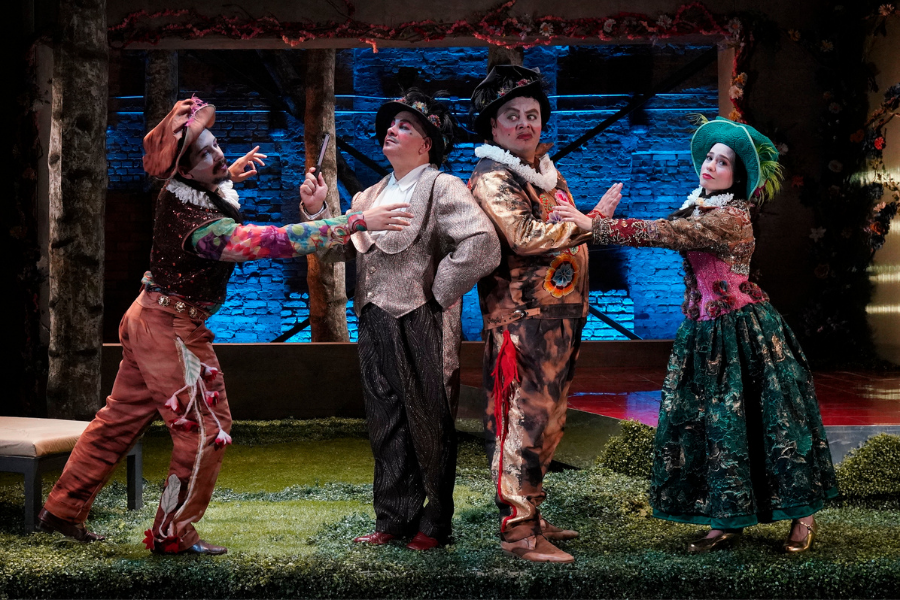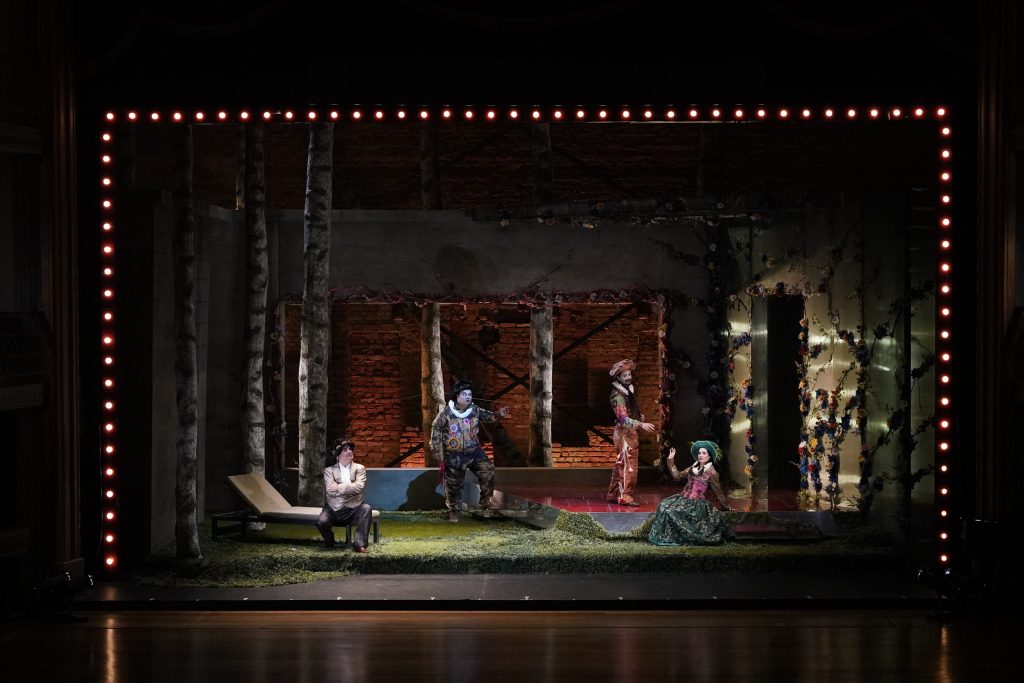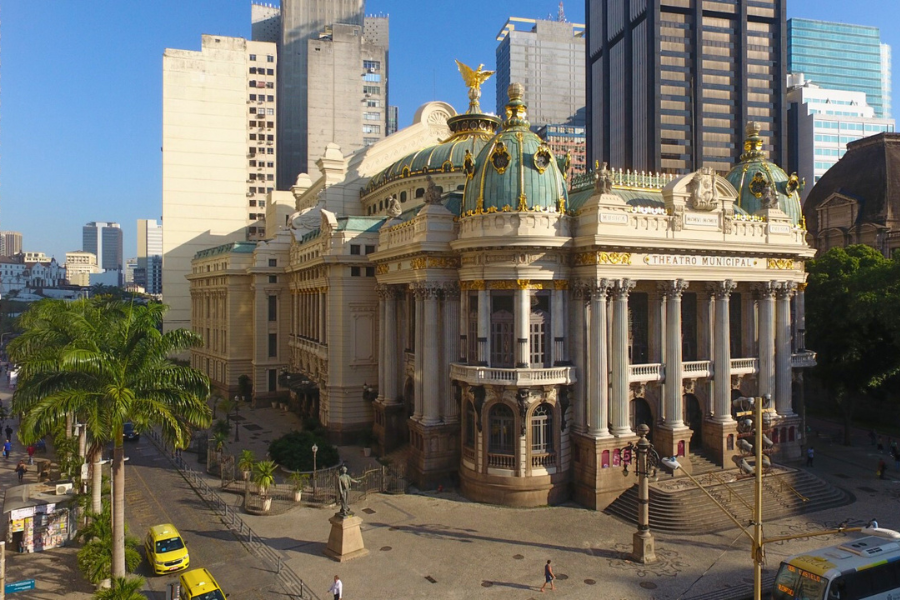El Theatro São Pedro estrena “El Señor Bruschino” de Gioachino Rossini

El montaje inédito cuenta con dirección musical de Cláudio Cruz, puesta en escena e iluminación de Caetano Vilela, vestuario de Gabriel Villela y escenografía de Duda Arruk. El estreno será el 3 de diciembre. El programa también tendrá transmisión en vivo gratuita el 9 de diciembre.
El Theatro São Pedro, institución del Gobierno del Estado de São Paulo y de la Secretaría de Cultura y Economía Creativa del Estado, gestionado por la organización social Santa Marcelina Cultura, cierra la temporada lírica con el estreno en diciembre de la ópera El señor Bruschino, de Gioachino Rossini (1792-1868) y libreto de Giuseppe Maria Foppa (1760-1845).
Con puesta en escena e iluminación a cargo de Caetano Vilela, el montaje contará con la dirección musical de Cláudio Cruz, quien comandará la Orquesta del Teatro São Pedro. El vestuario es de Gabriel Villela, quien también firma el visagismo, y la escenografía es de Duda Arruk.
Saulo Javan interpreta a Bruschino (padre) y Savio Sperandio es Gaudenzio. Completan el reparto Lina Mendes (Sofía), Daniel Umbelino es Florville (amante de Sofía), Fernanda Nagashima, Mariana (criada), Gustavo Lassen, Filiberto (anfitrión), Fellipy Oliveira, delegado de policía y Eduardo Gutiérrez, Bruschino (hijo).
Gioachino Rossini nació en 1792 en la ciudad italiana de Pesaro y a la edad de 18 años compuso su primera ópera. Maestro del humor y con gran sensibilidad su gran éxito de público llegó pronto, a los 21 años, con títulos como Tancredo y L’Italiana en Algeri.
En los veinte años siguientes, compuso unas cuarenta obras, llegando al punto de presentar al público cuatro o cinco títulos en el mismo año.
El señor Bruschino
Llamada farsa lúdica en un acto, El señor Bruschino se estrenó el 27 de enero de 1813 en Venecia, y fue la última de las cinco óperas cómicas que el compositor italiano escribió para el Teatro de San Moisè. Rompiendo con el estereotipo de la ópera italiana, Bruschino abandonó el disfraz y la argumentación y utilizó música y técnicas interesantes para describir la realidad, en la que las personas alternan entre la angustia y la alegría. La apertura causó escándalo en el estreno, ya que Rossini pide a los segundos violines que golpeen el arco en los estantes de las partituras. En Italia, la ópera fue representada sólo una vez en el siglo XIX.
El libreto se basó enel texto francés Le fils Par Hazard en el que un joven de una familia adinerada, Florville, se hace pasar por otro, en este caso por hijo de Bruscchino. Florville se conmueve por la intención de conquistar la mano de Sofía, protegida de Gaudenzio. En el libreto de Giuseppe Maria Foppa, el joven Florville todavía logra convencer a Gaudenzio de que en realidad es el hijo de Bruscchino y juntos tratan de convencer a Bruscchino de que él es el padre de Florville. Por si fuera poco, llega el verdadero hijo de Bruscchino, un jugador empedernido, que contrajo su vida.
«Lo que hace que la ópera sea interesante es cómo Rossini sorprende a través de la música, dando personalidad a cada personaje involucrado en el conflicto. Es una ópera magra, con solo ocho personajes, sin distracciones con extras ni coro, y aquí no basta con cantar muy bien, todos necesitan ser excelentes actores», dice Caetano Villela.
Para el diseño del espectáculo, el director Cláudio Cruz destaca la importancia del vestuario. «Decidí contar esta historia dándole un protagonismo al vestuarioy, para ello, invité al director y diseñador de vestuario Gabriel Villela, quien en sus creaciones escénicas tiene un trabajo muy elaborado en releer una estética barroca. Su colaboración fue esencial para el concepto general de puesta en escena», dice el director.
«La iluminación enmarca la escena como si fuera un gran espejo de camerino, diálogos con los cantantes dando una lectura metateatro, del teatro dentro del teatro. El libreto de la ópera apunta de esta manera al deconstruir a los personajes permitiéndoles, en sus pensamientos, dialogar con el público», añade Caetano Villela, quien firma también la iluminación del montaje.
Transmisión en vivo
La función del jueves 9 de diciembre será transmitida en vivo en el canal de YouTube del Theatro São Pedro: youtube.com/TheatroSaoPedroTSP
TAQUILLA
Los boletos cuestan R$ 80 a R$ 10 y deben comprarse exclusivamente a través del sitio: https://theatrosaopedro.byinti.com/
PROGRAMA
EL SEÑOR BRUSCHINO
POR GIOACHINO ROSSINI
Libreto de Giuseppe Maria Foppa
ORQUESTA DEL ATRO São PEDRO
- Cláudio Cruz, dirección musical
- Caetano Vilela, puesta en escena e iluminación
- Duda Arruk, escenografía Gabriel Vill her,vestuarioy rostro
ELENCO
- Saulo Javan, Bruschino (padre)
- Savio Sperandio, Gaudenzio (tutor)
- Lina Mendes, Sofía
- Daniel Umbelino, Florville (amante de Sofía)
- Fernanda Nagashima, Mariana (criada)
- Gustavo Lassen, Filiberto (anfitrión)
- Fellipe Oliveira, oficial de policía
- Eduardo Gutiérrez, Bruschino (hijo)
Ensayo abierto: 2 de diciembre, jueves, 7 p.m.
Entrada gratuita.
Retirada dos horas antes del inicio del espectáculo en la taquilla digital
Funciones: 3, 4, 5, 8, 9, 10, 11 y 12 de diciembre
De miércoles a sábado a las 20 h, domingo a las 17h
- Lugar: Theatro São Pedro
- Dirección: Rua Barra Funda, 171 – Barra Funda, São Paulo
- Entradas:R$ 80 (total) a R$ 10 (mitad)






